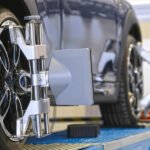

Why US cars struggle in the African market
While American trucks and SUVs dominate their home turf, their penetration into the African market remains surprisingly low. Several factors contribute to this, ranging from fuel preferences and infrastructure limitations to after-sales concerns and brand perception. Let’s break down the key reasons why American cars haven’t quite hit the African tarmac with the same gusto:
Gas-guzzling giants in a fuel-conscious continent:
The fuel equation: Africa faces unique fuel price challenges. Many countries lack oil refineries, making them reliant on imports, and taxes often push prices higher. Fuel efficiency becomes paramount. American cars, traditionally known for their powerful engines and larger footprints, often fall short in this department compared to the fuel-sipping Japanese and European models favored in Africa.
Diesel dominance: Unlike the US, diesel engines reign supreme in Africa. Their fuel efficiency and durability suit the often-rugged terrain and limited access to fuel stations. American carmakers, lacking a strong presence in the diesel market, miss out on a massive segment.
Rough roads and rugged terrain:
Built for smooth sailing, not potholes: American cars are typically designed for well-maintained roads, common in the US. However, Africa’s infrastructure presents a different story. Potholes, dirt tracks, and uneven surfaces test the mettle of any vehicle. American cars, with their softer suspensions and larger components, can be more susceptible to damage on these roads, leading to higher repair costs and downtime.
Spare parts struggle: Finding replacement parts for American cars in Africa can be a headache. Limited dealership networks and the dominance of Asian and European brands make sourcing parts a logistical challenge. This delays repairs and increases costs, deterring potential buyers.
After-sales service concerns:
The garage gap: Compared to established brands like Toyota and Nissan, American carmakers have a much smaller service network in Africa. This lack of readily available after-sales service and trained technicians creates anxiety for car owners. The fear of being stranded without proper support in remote areas discourages many from choosing American cars.
Warranty woes: Warranty coverage for American cars often doesn’t extend to Africa, or comes with significant limitations. This leaves buyers feeling exposed to potential repair costs, further driving them towards brands with more comprehensive warranties in the region.
Brand perception and market trends:
Second-hand dominance: The African car market is largely driven by used imports. Japanese brands have built a strong reputation for reliability and affordability in this segment, creating a deep-seated loyalty among African buyers. American cars, often associated with higher price tags and perceived maintenance challenges, struggle to compete.
Shifting sands: African car preferences are evolving. Fuel efficiency, affordability, and practicality are becoming increasingly important. While American carmakers are making strides in these areas, they haven’t yet caught up to the established dominance of their Asian and European counterparts.
Examples and Figures:
Fuel efficiency gap: A typical American SUV might get 15 miles per gallon (MPG), while a comparable Toyota might achieve 25 MPG. This translates to significant cost savings for African drivers over time.
Market share disparity: In Nigeria, one of Africa’s largest car markets, Japanese brands hold over 70% of the market share, while American brands struggle to reach even 5%.
Warranty limitations: Some American carmakers offer “grey market” warranties in Africa, which exclude coverage for certain components or repairs under specific conditions.
Conclusion:
While American cars hold a certain mystique, their success in Africa hinges on adapting to the continent’s unique needs and preferences. Improving fuel efficiency, building a robust dealership network, and offering comprehensive warranties are crucial steps. By making these adjustments, American carmakers can start revving their engines towards a thriving African market.
Add a comment Cancel reply
Categories
- Car Gadgets (17)
- Car News (33)
- Car Reviews (43)
- Car Wars (7)
- Mechanicals (32)
- Uncategorized (2)
Recent Posts
About us

Popular Tags
Related posts


The New Car Smell: What you need to Know

The Drawbacks of Stretched Sedans: Cruising in Comfort or Compromising Convenience?








